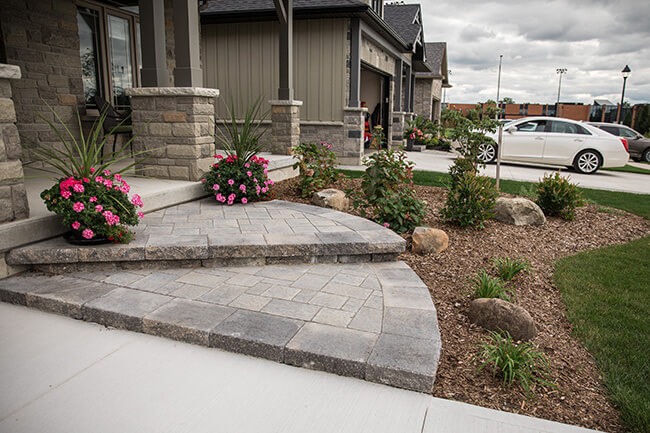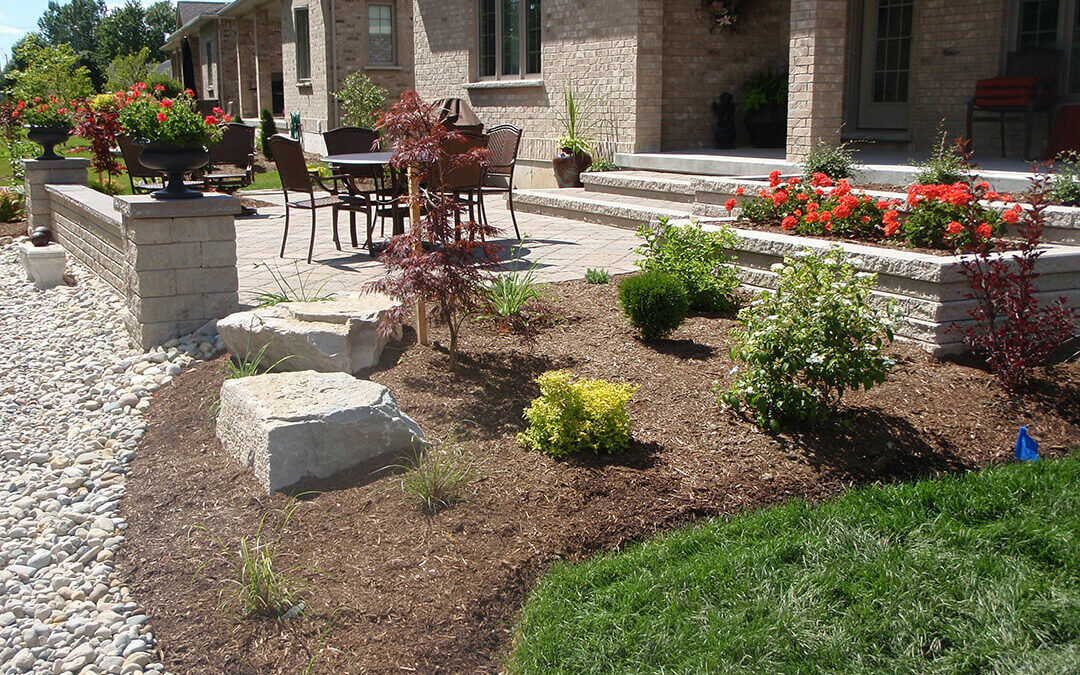 Hardscaping – the art of landscaping with non-living elements – adds structure, functionality, and aesthetic appeal to outdoor spaces. Doing the job right requires an understanding of the principles of hardscaping, careful planning, and attention to detail.
Hardscaping – the art of landscaping with non-living elements – adds structure, functionality, and aesthetic appeal to outdoor spaces. Doing the job right requires an understanding of the principles of hardscaping, careful planning, and attention to detail.
From patios and pathways to retaining walls and driveways, hardscaping can transform a mundane backyard into a beautiful and usable oasis. In this guide, we’ll delve into the principles and steps involved in hardscaping, along with common mistakes that DIYers make.
Principles of Hardscaping
 Functionality
Functionality
Before diving into the design, we consider the intended use of the hardscaped area. Whether it’s for entertaining guests, relaxing, or enhancing curb appeal, functionality primarily guides the layout and material choices.
Unity and Harmony
Hardscaping elements should complement the existing landscape and architectural features. We aim for a cohesive design that integrates seamlessly with the surroundings.
Balance
 Our designs achieve visual balance by distributing hardscape elements evenly throughout the space. Balance is achieved through symmetry, asymmetry, or radial patterns, depending on the desired aesthetic.
Our designs achieve visual balance by distributing hardscape elements evenly throughout the space. Balance is achieved through symmetry, asymmetry, or radial patterns, depending on the desired aesthetic.
Proportion and Scale
We also focus on maintaining proper proportion and scale to ensure that hardscape elements are not overpowering or overshadowed by the surrounding landscape. If there are existing structures, we consider the scale of those other elements and the size of the area overall when selecting materials and designing layouts.
Durability and Maintenance
Our recommendation is to select durable materials that can withstand the local climate and require minimal upkeep. Proper maintenance is essential for preserving the integrity and appearance of hardscape features over time.
Steps Involved in Hardscaping
Site Assessment
 The first step is an evaluation of the site to identify existing features, such as slopes, drainage patterns, and utility lines, that may impact the hardscaping design. Factors like sun exposure, soil conditions, and access points will impact the layout.
The first step is an evaluation of the site to identify existing features, such as slopes, drainage patterns, and utility lines, that may impact the hardscaping design. Factors like sun exposure, soil conditions, and access points will impact the layout.
Design Development
Then, we’ll sketch out the desired hardscape elements, taking into account the principles of hardscaping discussed earlier. Our design team then uses purpose-built software to create detailed plans and visualizations.
Material Selection
Keeping a customer’s budget in mind, hardscaping materials – mainly natural stone or precast products – are selected to complement the design aesthetic while meeting practical requirements such as durability, slip resistance, and maintenance needs.
Preparation
 When the planning is complete, we begin preparing the site by clearing vegetation, grading the terrain, and addressing any drainage issues. Hardscaping projects require a sturdy base, such as crushed stone or gravel, to provide a stable foundation for hardscape features like patios and pathways.
When the planning is complete, we begin preparing the site by clearing vegetation, grading the terrain, and addressing any drainage issues. Hardscaping projects require a sturdy base, such as crushed stone or gravel, to provide a stable foundation for hardscape features like patios and pathways.
Installation
Adhering to the plan as well as industry best practices, our hardscaping crew begins installation. To ensure proper alignment, spacing, and compaction, the team uses appropriate tools and techniques.
Finishing Touches
Finishing touches such as edging, lighting, and softscaping are added when desired to enhance the visual appeal and functionality of the hardscaped area.
Common DIY Mistakes
Skipping Site Assessment
Neglecting to assess the site can lead to issues like poor drainage, uneven surfaces, and conflicts with utility lines.
Overlooking Design Principles
Failing to consider principles like functionality, unity, and proportion can result in a haphazard or unbalanced hardscape design.
Poor Material Selection
Choosing materials based solely on aesthetics without considering durability, maintenance requirements, and suitability for the site can lead to premature deterioration and costly repairs.
Inadequate Preparation
Rushing through site preparation and base installation can compromise the stability and longevity of hardscape features, leading to issues like settling, cracking, and drainage problems.
Improper Installation Techniques
Incorrect installation techniques, such as improper compaction, inadequate joint spacing, and poor alignment, can result in uneven surfaces, instability, and structural failure.
Neglecting Maintenance
Failing to properly maintain hardscape features, including regular cleaning, sealing, and/or repairs, can diminish their appearance and lifespan.
While there are some aspects of landscaping that homeowners can tackle themselves, the labour-intensive and complex nature of hardscaping makes it more difficult for DIYers to get right. Whether you’re planning on a small patio project or a complete backyard makeover, contact us for professional, beautiful, and long-lasting results.

